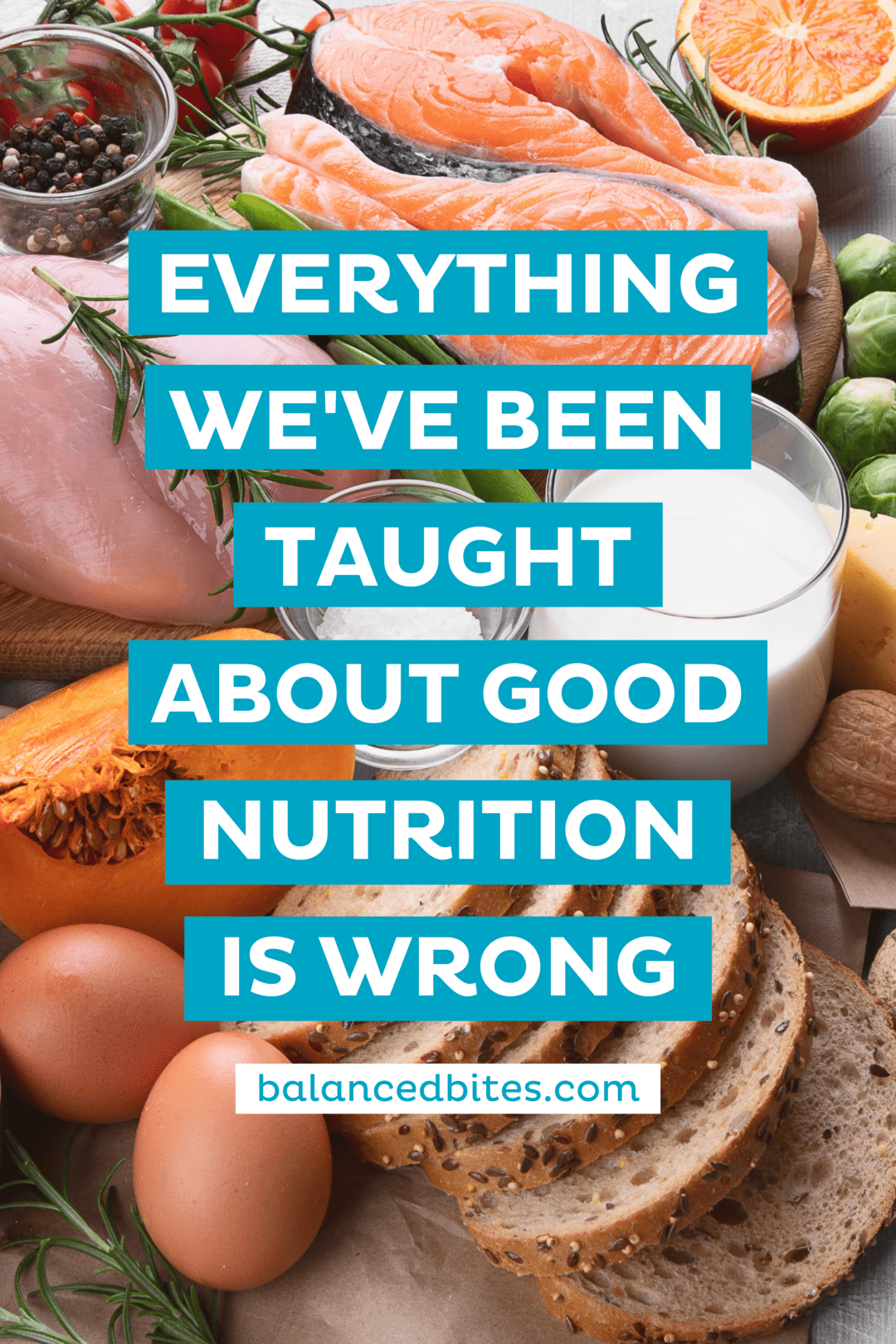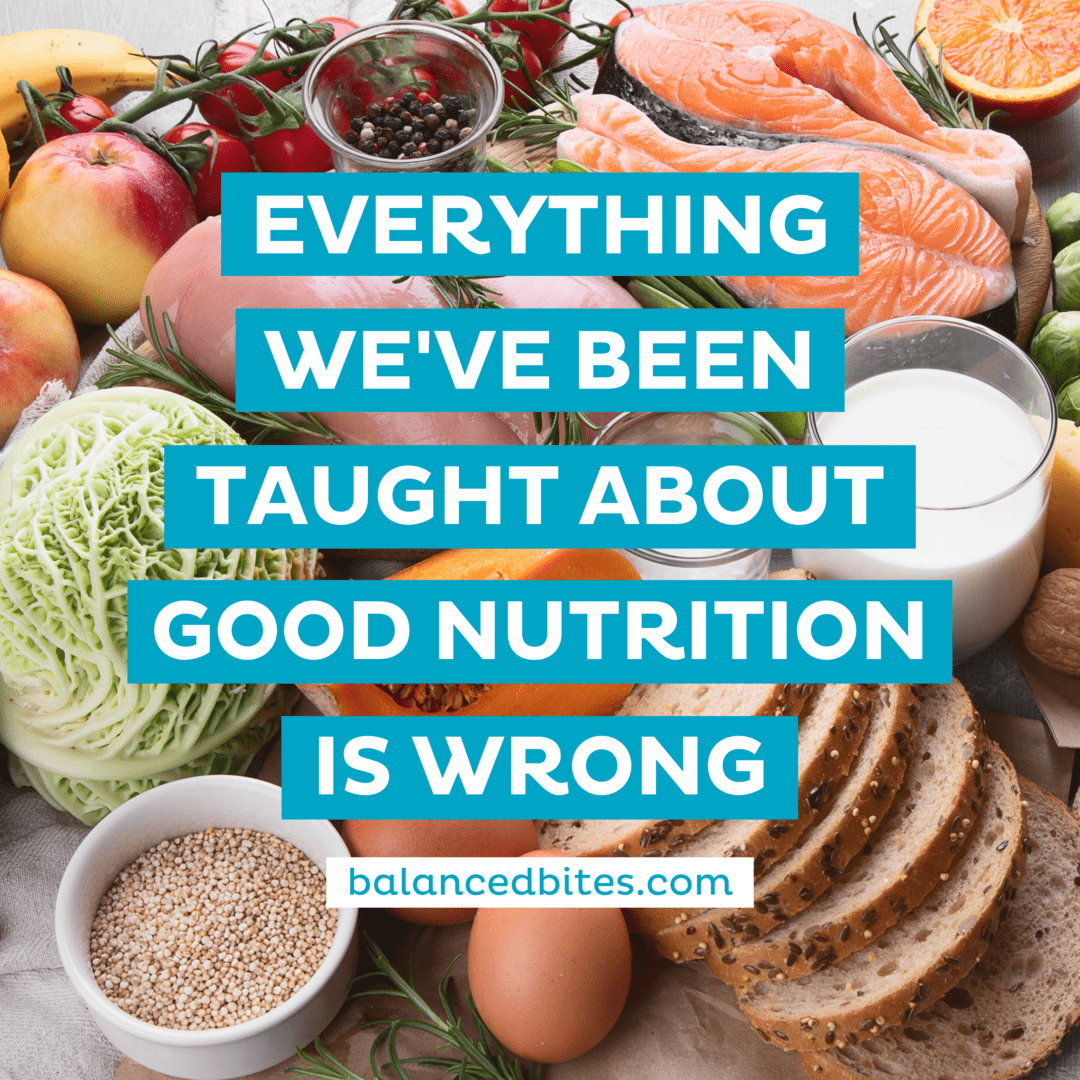In this series, I'm sharing some excerpts from my book, “Practical Paleo” with you.
You may or may not choose to follow a paleo style of eating, it isn't required to be healthy. But, many of you have told me you've benefitted from eating paleo for a short or long period of time, so these posts will explain more of the premise behind paleo eating for those curious.
Further, while I don't currently educate publicly about the paleo diet, you can always read a lot more and get over 100 easy paleo recipes in “Practical Paleo.”
We live in a time when up is down and black is white. We have been taught to believe that the foods coming out of factories are safer and healthier than the foods our great-grandmothers ate.
Think about it a minute. If Food A has gone through a factory and been processed from what it once was in nature into something else entirely, and Food B is identical to what it was in nature (with the exception of having been cooked, of course), which food is healthier? It’s a no-brainer, isn’t it?
More packaged “foods” than ever are out there touting health claims, yet we’re less healthy with each passing generation. It just doesn’t add up. Obesity is on the rise in children, who also frequently suffer from behavioral disorders, early-onset puberty, and autoimmune conditions, and they’re receiving those diagnoses at younger and younger ages.
Unfortunately, the broad, sweeping claims about health and nutrition that we hear from so-called authorities are more likely to represent the interests of giant food corporations, which spend millions on lobbying and campaign contributions and whose hands are deep in our pockets. It isn’t the goal of the food industry to keep us healthy, so relying on Big Food to tell us the truth about nutrition would be foolish and misguided.
Did you know that doctors are typically given less than a week of training in nutritional biochemistry? Yet people who are suffering as a result of poor diet and lifestyle choices end up in their offices on a daily basis. And most dietitians are unable to help because they have been taught to promote and support the USDA recommendations, which have led us down a path of declining health for more than three decades.
The guidelines set forth by the USDA are not based on sound scientific theories or conclusive proof. They are based on illogical and potentially dangerous hypotheses that simply don’t hold water. So we’re left to take dietary advice from the media, which inundate us with contradictions. We’re barraged by recommendations that don’t help, while people remain sick.
Know this: We are not smarter than nature. We cannot make better food than nature. We need to eat real, whole food—period.
A responsible individual won’t trust the status quo, the media, the government, or even a well-intentioned but likely ill-informed health-care professional for information on how to achieve health. We must self-educate, never accept conventional wisdom at face value, and seek thorough information that we find sensible, helpful, and intuitive. Heck, if what I recommend in this book doesn’t make sense to you based on your intuition and how it feels when you actually follow my advice, then try something else. Insanity is doing the same thing over and over again while expecting different results each time. Let’s try to break this cycle. The first step is to recognize what we’ve been fed.
What the Government Is Feeding You
Let’s look at how the United States government tells us to eat in its latest recommendations, which are revised and published every five years as the Dietary Guidelines for Americans, a joint USDA-FDA venture. (The famous USDA Food Pyramid, which was recently rebranded as MyPlate, is based on these guidelines.)
The key recommendations in the 2015 Dietary Guidelines for Americans state:
Consume a healthy eating pattern that accounts for all foods and beverages within an appropriate calorie level.
A healthy eating pattern includes:
- A variety of vegetables from all of the subgroups—dark green, red and orange, legumes (beans and peas), starchy, and other
- Fruits, especially whole fruits
- Grains, at least half of which are whole grains
- Fat-free or low-fat dairy, including milk, yogurt, cheese, and/or fortified soy beverages
- A variety of protein foods, including seafood, lean meats and poultry, eggs, legumes (beans and peas), and nuts, seeds, and soy products
- Oils
A healthy eating pattern limits:
- Saturated fats and trans fats, added sugars, and sodium
In previous editions of the Dietary Guidelines, the USDA also recommended limiting cholesterol to less than 300 mg per day. However, that recommendation was dropped from the 2015 edition. Here’s how the report released by the Guidelines advisory committee in advance of the actual guidelines addressed the change:
Previously, the Dietary Guidelines for Americans recommended that cholesterol intake be limited to no more than 300 mg/day. The 2015 [Dietary Guidelines Advisory Committee] will not bring forward this recommendation because available evidence shows no appreciable relationship between consumption of dietary cholesterol and serum cholesterol. . . . Cholesterol is not a nutrient of concern for overconsumption.
Did you catch that? The USDA is finally saying that the amount of cholesterol that we obtain from our diet is not of concern! This is a huge step in the right direction. But because myths about the health effects of cholesterol are still widespread, we’ll explore why there’s no need to be concerned about cholesterol on page 31.
In the guidelines above, it seems at first glance that the USDA is trying to get people to eat more real food, right? Well, while many of the recommendations are a step in the right direction, some are still misguided, and, as with many things, the details are what matter most.
Eating a variety of vegetables and sources of protein and increasing seafood consumption make sense, but the remaining recommendations are flawed from the standpoint of nutritional biochemistry and health. And, unfortunately, these are the biggest points of contention when trying to get people to open their minds up to a new possibility—that what we think we know about nutrition is wrong.

Starting next week, we'll take a closer look at these questionable USDA recommendations, beginning with grains.



Comments 7
Pingback: Everything We’ve Been Taught About Good Nutrition Is Wrong | Balanced Bites | Squeaky clean heat-and-eat meals | Organic Spices | Approx Cosmetics
Pingback: Everything We’ve Been Taught About Good Nutrition Is Wrong | Balanced Bites | Squeaky clean heat-and-eat meals | Organic Spices | Created by Diane Sanfilippo
Pingback: What We've Been Fed: The Recommendation for Legumes | Balanced Bites | Squeaky clean heat-and-eat meals | Organic Spices | Created by Diane Sanfilippo
Pingback: What We've Been Fed: The Recommendation for Dairy | Balanced Bites | Squeaky clean heat-and-eat meals | Organic Spices | Created by Diane Sanfilippo
Wanting more information. Love what I’m reading. I want to hear more about natural eating
Author
More coming!
Pingback: What We've Been Fed: The Recommendation for Saturated Fats | Balanced Bites | Squeaky clean heat-and-eat meals | Organic Spices | Created by Diane Sanfilippo